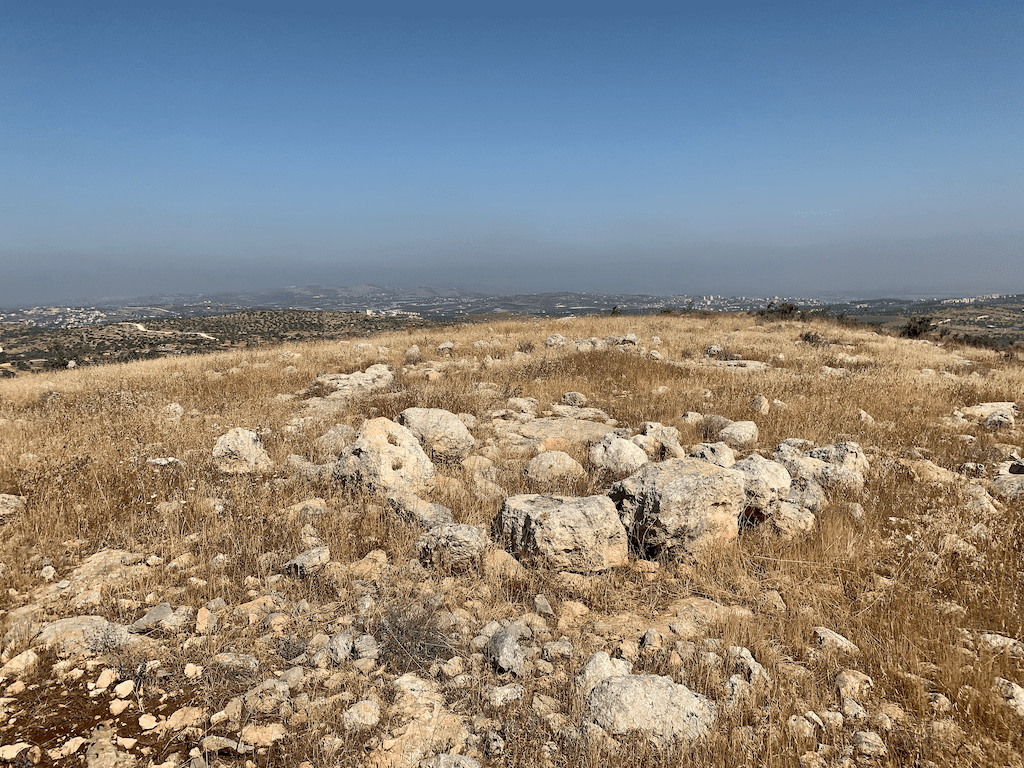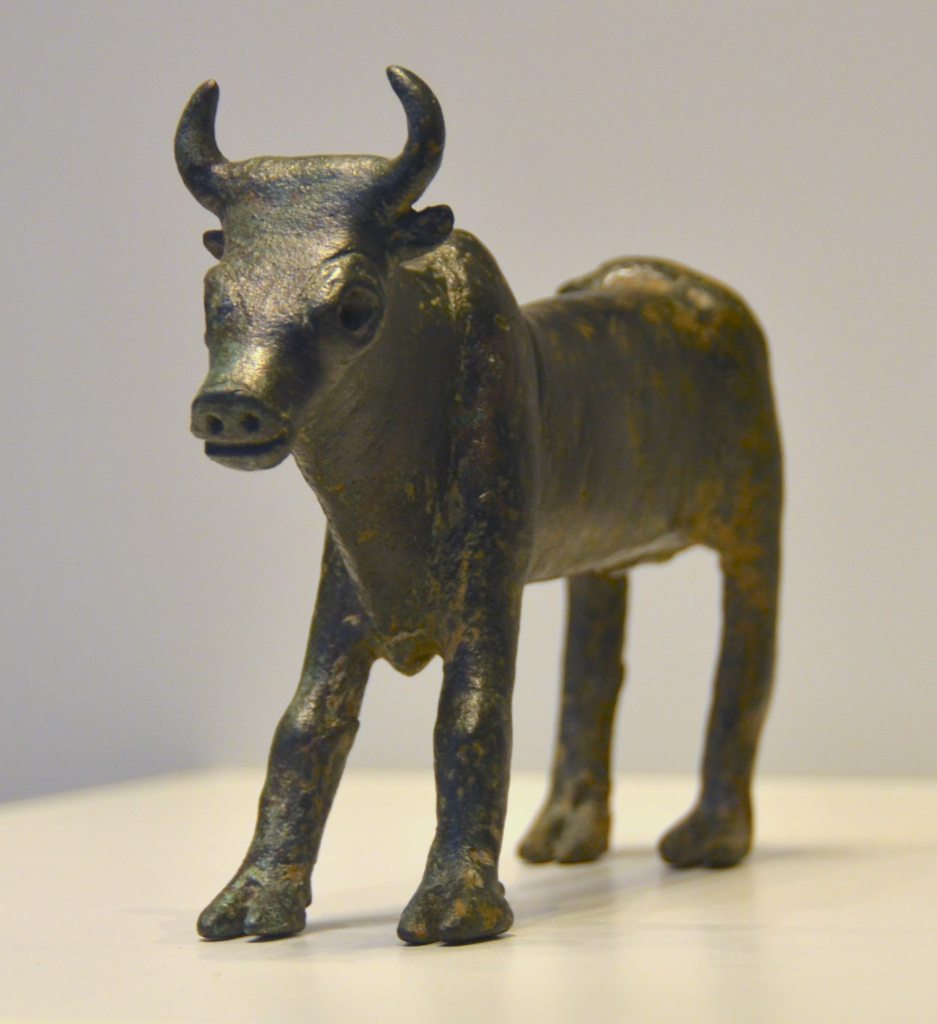Location
The “Bull Site” is located in northern Samaria, east of Tel Dothan, on the Dhahrat et-Tawileh ridge north of the Zebabda Valley.

History
The Bull Site is dated to the Iron Age I period (12th-11th centuries BCE). It is an open-air cult site, consisting of a rectangular enclosure with a central platform. The bull statuette was found on the platform, along with a number of other artifacts, including pottery, flint tools, and animal bones
History of Excavations
Excavations were conducted between 1978 and 1981 under the direction of A. Mazar, focusing on the site’s unique features and artifacts.
Important Findings
The site features a round enclosure with a stone wall, indicating its use as a cult place. Notable discoveries include pottery sherds, bronze objects, and a square cult vessel, dating to the Iron Age. The bronze bull figurine is a significant find, linking the site to Canaanite and Israelite cultic practices.
The bull figurine

The bronze bull figurine discovered at the “Bull Site” is a unique and significant artifact. Its size, style, and detailed design suggest a continuation of the Canaanite tradition of creating bronze bull figures, similar to those found at Hazor and Ugarit. This figurine likely played a role in local Canaanite or Israelite rituals, as the bull figure was associated with Baal worship in Canaanite iconography and held prominence in the Israelite cult among northern tribes. The figurine’s discovery adds valuable insight into the religious practices and artistic expressions of the period.
Sources
The “Bull Site”- An Iron Age I Open Cult Place
AMIHAI MAZAR The Hebrew University of Jerusalem
Stern, Ephraim-New Encyclopedia of Archaeological Excavations in the Holy Land 1-Israel Exploration Society (1993)


